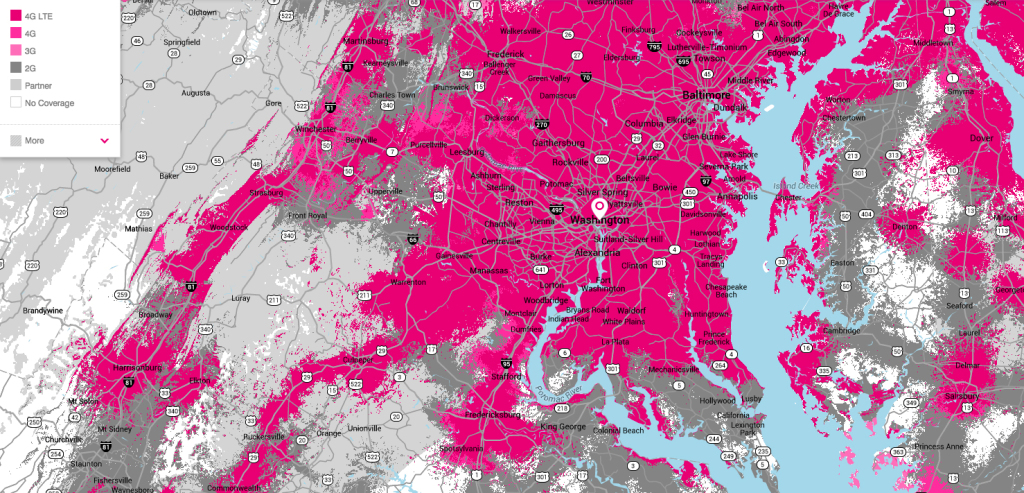T-Mobile Decides To Base New Coverage Map On Real Data From Real Phones
T-Mobile has been trying, for the past few years, to break away from the dominant competition in the mobile space by doing anything they can think of differently. And now, that extends to information for potential customers, too: their coverage map.
The company announced the change to the new map today. Basically, it has two big differences from everyone else’s, the company claims. First, it’s going to be updated at least twice a month, instead of being a static, annual thing. And secondly, it works backwards.
Your typical wireless coverage map is a visual representation of where the company claims to provide service. Customer experience, for a variety of reasons, may not always line up.
So T-Mobile’s new map is coming at it from the other angle: it’s a visual representation of where customers say the company provides service. The so-called “Next Gen Network Map” isn’t 100% made up of customer data points; it also includes data from third-party network monitoring services like Inrix.
The map doesn’t just say where customers get T-Mobile coverage, but specifically breaks down what level of coverage — 4G LTE vs 3G, and so on — is available at a given address. The map also incorporates speed test data for some (but not all) locations, showing the average of customer network speed-tests run over the past 90 days.
It’s not hard to see why T-Mobile would be gung-ho for the new coverage mapping tech. Despite aggressive expansion, T-Mobile still faces a popular perception of having a small, slow, crappy network. If the “uncarrier” can refute that perception with real, real-time data, they may be able to win over more customers from AT&T and Verizon.
As for consumers, it’s a good way to get a look at what T-Mobile offers in your area, or in an area you’re likely to travel to. Though data that granular can be of mixed utility: two addresses, each within six blocks of yours truly, offered wildly divergent speed test results, with one clocking in at barely 1 Mbps and the other reporting an average of 12 Mbps. And none of the customer-verified nodes in between those two addresses had speed test data attached.
Still, more transparency is basically always a good thing. And T-Mobile’s chief tech officer Neville Ray seems to agree. “We want the rest of the competition to do this,” Ray said. “In the future, customers will demand greater visibility on all aspects of their service.”
T-Mobile ditches static coverage map [CNet]
Want more consumer news? Visit our parent organization, Consumer Reports, for the latest on scams, recalls, and other consumer issues.


